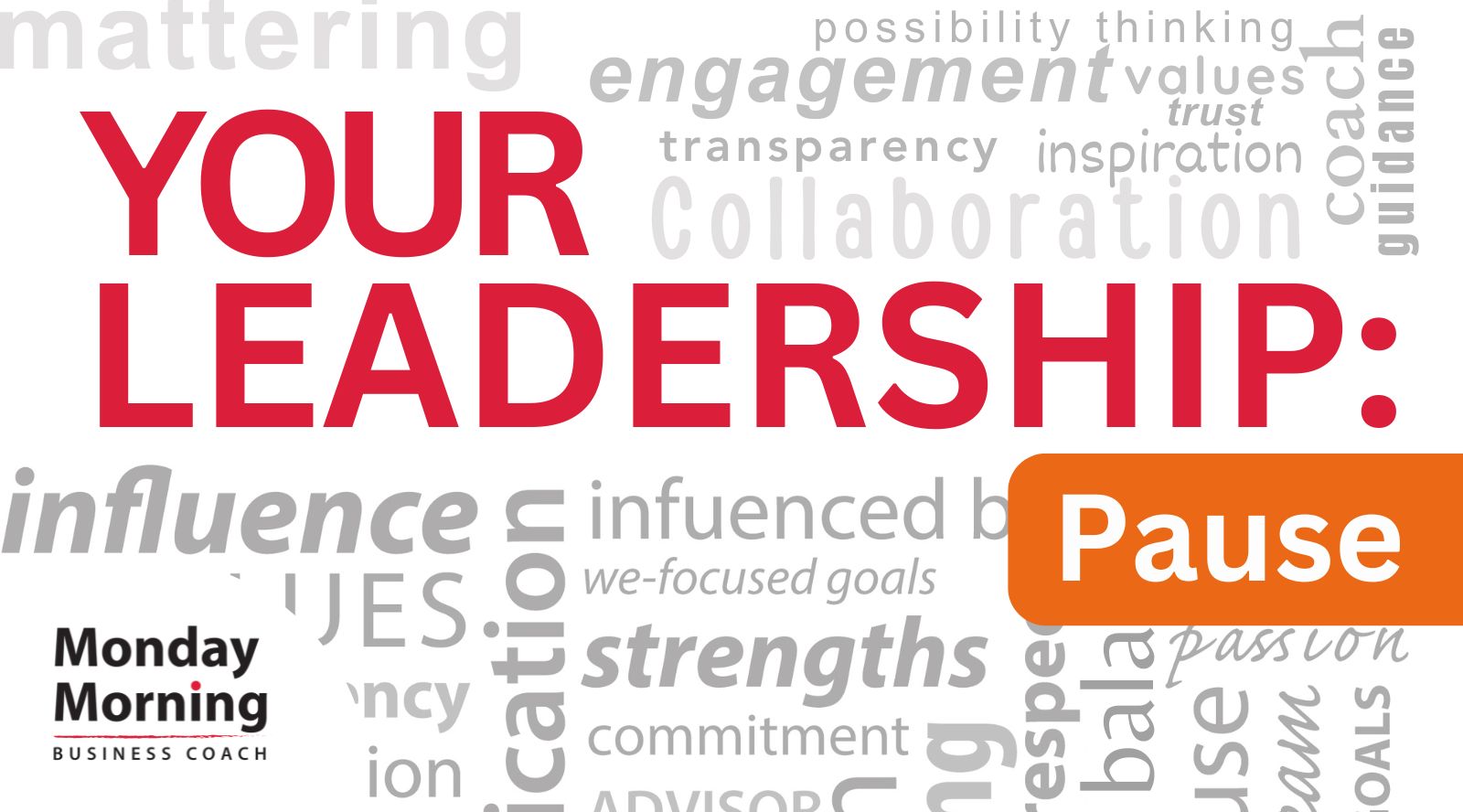We recently began a series based on an article that discusses these five leadership behavior areas on the McKinsey and Company website:
- Your Strengths
- Pausing
- Building Trust
- Being Curious
- Your Wellbeing
Last week, we covered Your Strengths, here we encouraged you to identify your top skills and strengths. In that post, we also provided you with some of our top recommendations for assessing what they might be.
Today, we’re focusing on the importance of Pausing. If you’ve been with us for any length of time, you’ll know that the Pause is one of the foundations of the work that we do, and can be a game-changer for your leadership.
While we initially created the Pause to help people with their reactivity, we’ve found some other successful ways to add it into everyday life.
In-the-moment
- When you feel yourself getting reactive, PAUSE and take a breath, a sip of water, or a walk down the hall. Ask yourself, “Is what I’m about to do or say in alignment with my goal?”
- If the answer is “yes”, well done! Take a few minutes after the interaction to celebrate that success.
- If the answer is “no”, then consider how you might respond as a leader, versus reacting.
Before
- Before heading into your day or into a conversation, PAUSE to set your intentions. Ask yourself, “If I’m communicating in a way that’s in alignment with my goal, what will that look like?”
- Also consider what it could look like to respond as the leader you want to be, should things go sideways. Try to get as detailed as possible with the new responses you’ll use, if you find yourself getting reactive.
Regularly
- Consider setting up a couple of electronic reminders (or handwritten notes) throughout the day to remind you to PAUSE. Ask yourself, “Am I showing up in ways that are in alignment with my goals?”
- If the answer is “yes”, well done! Take a few minutes to celebrate your successes and be as detailed as you can about how things went.
- If the answer is “no”, then reflect on your reactivity and what you would do differently next time, and consider setting up time with the other person(s) to clear the air. In addition, spend a few minutes to reset some intentions for the remainder of the day.
After
- After a meeting or at the end of your day, consider checking in with yourself. Ask yourself, “Did I show up in a way that was in alignment with my goal?”
- If the answer if “yes”, well done! Take a few minutes to celebrate your successes and be as detailed as you can about how things went.
- If the answer is “no”, then reflect on your reactivity and what you would do differently next time. Anytime you reflect on conversations that didn’t go as planned, try to followup with the other person as soon as possible to clear the air.
Using the PAUSE
can support you in strengthening
your relationships, your leadership,
and your personal satisfaction with your life.
Take some time to consider what your leadership goal is and then practice using our Pause framework. The more you use it, the more successful you’ll be at navigating your personal and professional worlds.
Let us know how it’s working for you, and stay tuned for next week when we’ll talk about the importance of building trust and psychological safety.
If you’d like support
leading at your best
contact us today.


